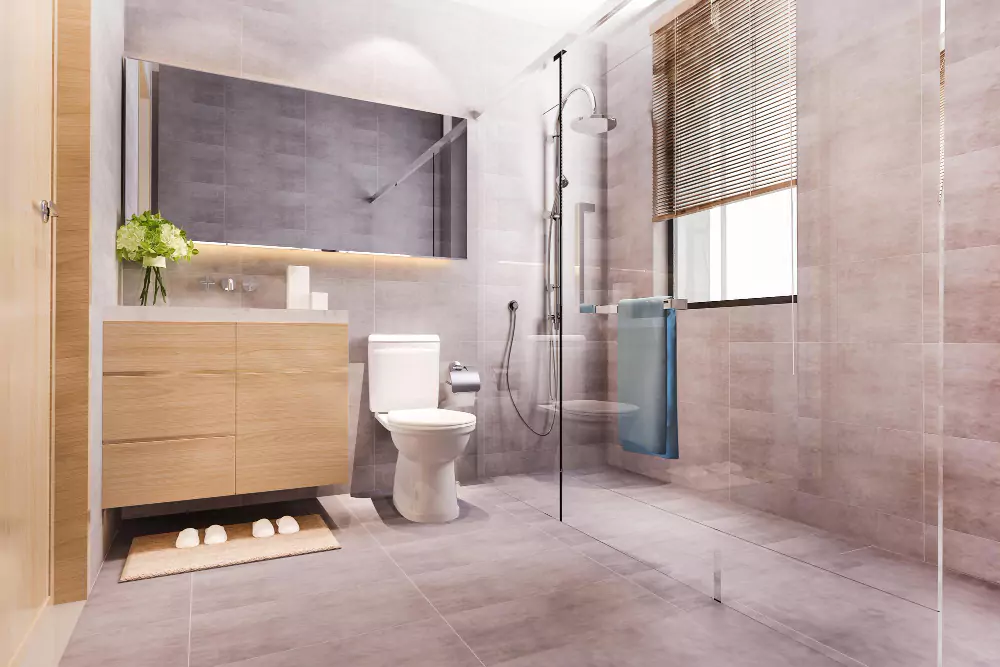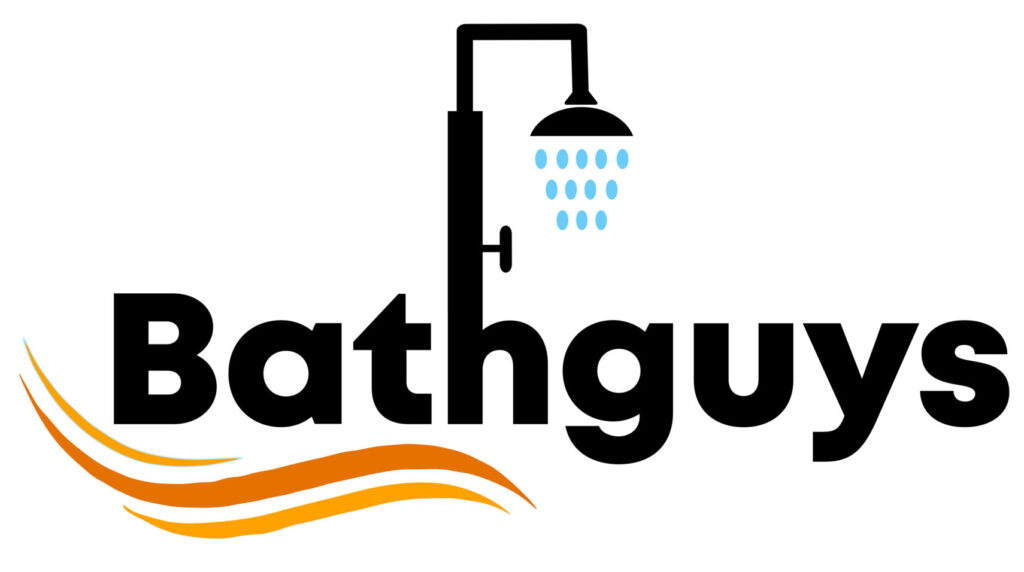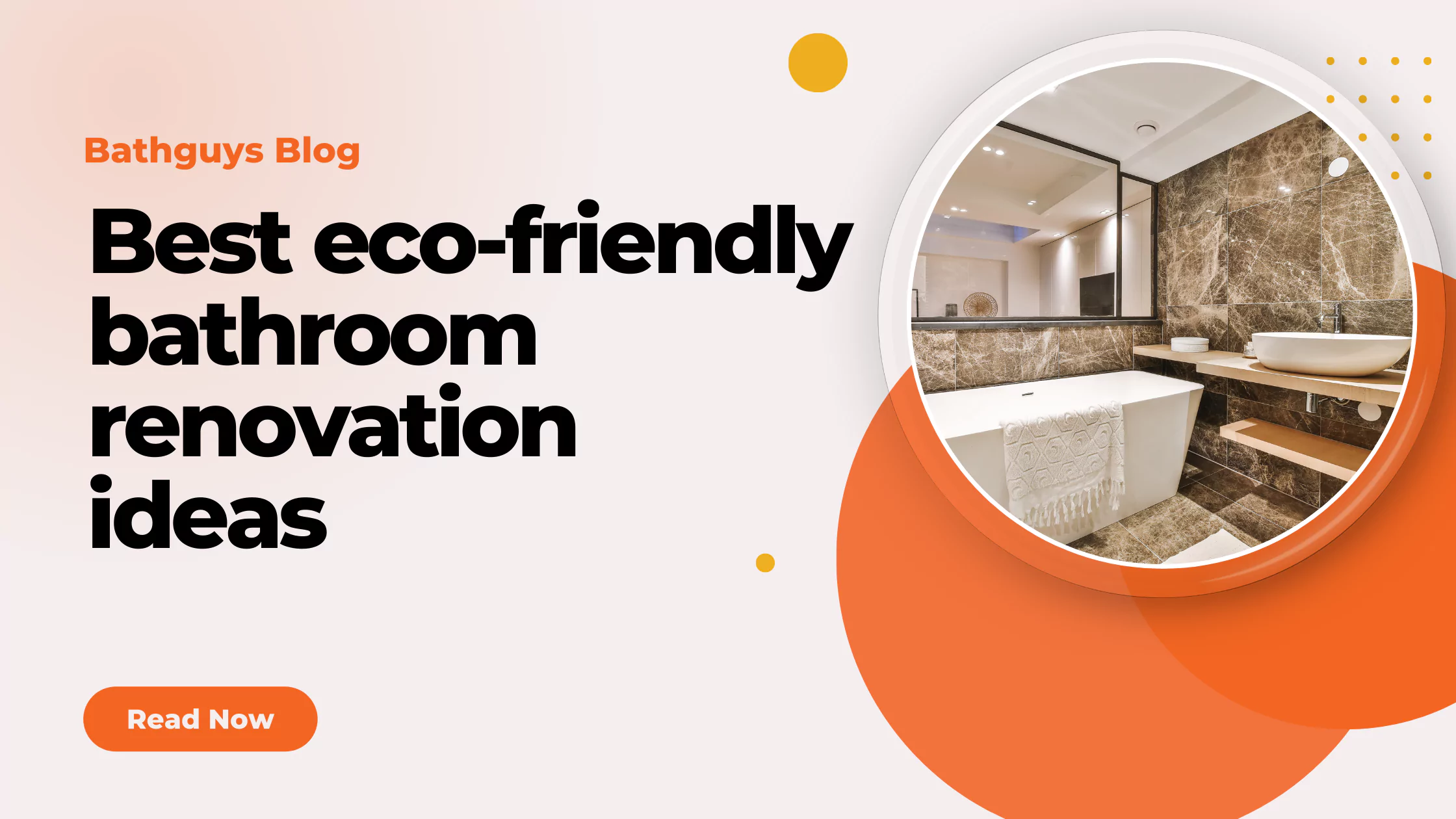Thinking of renovating your bathroom and going green? You’re not alone! More Canadians are choosing eco-friendly bathroom renovations to save water, reduce energy and create a healthier home. A green bathroom helps the planet and your wallet and adds value to your property. Whether you’re making small changes or a full renovation, it all makes a big difference.
In this blog we’ll show you the best eco-friendly bathroom renovation ideas to create a beautiful, sustainable space. From water saving fixtures to energy efficient lighting and eco-materials, we’ll walk you through smart solutions to make your bathroom greener without sacrificing comfort or style.
Table of Contents
Renovating your bathroom with sustainability in mind is a great way to contribute to a greener future. From saving water and energy to selecting eco-friendly materials, there are numerous ways to make your bathroom renovation both stylish and sustainable. In this post, we’ll explore a variety of eco-friendly bathroom renovation ideas that will help you create a greener, smarter, and more comfortable bathroom space.

1. Water Conservation Strategies
Water conservation is an essential component of any eco-friendly bathroom renovation. By upgrading your fixtures and adopting simple strategies, you can reduce water consumption while maintaining comfort and performance.
1. Install Water-Saving Fixtures
Modern water-saving toilets, faucets, and showerheads are designed to reduce water usage without sacrificing performance. Here’s how you can save water with these upgrades:
- Water-Saving Toilets: Traditional toilets use up to 6 liters of water per flush. Modern water-saving toilets use only 3-4 liters, cutting water consumption in half. Dual flush toilets allow you to choose between a full or partial flush, conserving even more water.
- Water-Saving Showerheads: These showerheads maintain strong water pressure while reducing water flow from 9 liters per minute to 5 liters.
- Water-Efficient Faucets: Aerator and sensor-based taps reduce water waste by regulating the flow.
2. Upgrade to Smart Showers
Smart showers allow you to control temperature, water flow, and set timers. Some even provide water usage data, helping you monitor your water consumption and reduce waste. These features make water conservation easier without compromising on comfort.
3. Install a Greywater System
A greywater system collects and filters wastewater from sinks, showers, and bathtubs and reuses it for toilet flushing or irrigation. This not only reduces demand for fresh water but also contributes to overall water efficiency.
4. Fix Leaks and Maintain Plumbing
Even small leaks can waste thousands of liters of water annually. Regularly inspect your bathroom for leaks in toilets, faucets, and pipes. Installing water leak detectors can help you identify hidden leaks early, preventing water waste and potential damage.
5. Water-Saving Habits
In addition to upgrading fixtures, adopting small behavioral changes can contribute to water conservation:
- Turn off the tap while brushing your teeth or shaving.
- Take shorter showers or install a shower timer.
- Collect cold water while waiting for it to warm up and use it for cleaning or watering plants.
2. Energy Efficiency Enhancements
Energy-efficient upgrades are another key aspect of creating a sustainable bathroom. These enhancements not only lower your utility bills but also reduce your environmental footprint.
1. Switch to LED Lights and Maximize Natural Light
Lighting is an important part of bathroom design, but traditional bulbs waste a lot of energy. LED lights are an excellent alternative:
- Use up to 80% less energy than incandescent bulbs.
- Last up to 25 times longer, reducing replacement costs.
- Provide bright, natural light with lower heat output.
To minimize energy use further, maximize natural light by installing skylights or large windows. Frosted glass or privacy film can maintain privacy while allowing ample sunlight to enter.
2. Install Energy-Efficient Ventilation Systems
Proper ventilation helps prevent mold growth and improve air quality, but traditional exhaust fans often use too much energy. Energy-efficient bathroom fans with built-in humidity sensors adjust airflow based on moisture levels, ensuring you don’t waste energy. Look for models with an ENERGY STAR® rating for maximum efficiency.
3. Upgrade to Smart Heating Solutions
Heating is one of the biggest energy consumers in the bathroom. Consider these smart heating options:
- Radiant Floor Heating: Distributes heat evenly and operates at lower temperatures, reducing energy use and keeping floors warm during the winter.
- Smart Thermostats: Schedule heating times for when you need it, reducing energy waste.
4. Use Energy-Efficient Water Heaters
Water heating accounts for a significant portion of household energy consumption. Consider these energy-efficient options:
- Tankless Water Heaters: Heat water on demand, eliminating the standby energy loss from traditional tank heaters.
- Solar Water Heaters: Use renewable solar energy to reduce your water heating bills over time.
- Heat Pump Water Heaters: Use up to 60% less energy than conventional electric water heaters.
5. Smart Technology for Energy Conservation
Smart technology can help you track and reduce energy usage. Consider these smart solutions:
- Motion Sensor Lights: Automatically turn off when no one is in the bathroom.
- Smart Plugs: Remotely control appliances to prevent unnecessary power usage.
- Energy Monitors: Monitor real-time energy usage to identify opportunities for saving.
3. Sustainable Material Selection
The materials you choose for your bathroom renovation play a significant role in its environmental impact. Opt for eco-friendly materials that are durable, low-impact, and contribute to a healthier living space.
1. Eco-Friendly Flooring Options
Sustainable flooring materials are an excellent choice for eco-conscious bathroom renovations. Here are some top options:
- Bamboo Flooring: A fast-renewable resource that is durable, water-resistant, and biodegradable.
- Recycled Tile: Made from repurposed glass, ceramic, or porcelain, these tiles offer both style and sustainability.
- Cork Flooring: Naturally antimicrobial and slip-resistant, cork is sourced from the bark of cork oak trees without harming them.
2. Sustainable Walls and Paint
The materials used for walls and finishes impact indoor air quality. Choose:
- Reclaimed Wood Panels: Adds warmth and texture while conserving resources.
- Recycled Glass Tiles: A vibrant, eco-friendly alternative to traditional ceramic tiles.
- Low-VOC or No-VOC Paints: These paints reduce indoor air pollution by minimizing volatile organic compounds (VOCs).
3. Eco-Friendly Countertops and Vanities
Bathroom countertops and vanities should combine style and sustainability. Consider these options:
- Recycled Glass Countertops: Made from crushed glass and eco-resins, these offer a unique and durable look.
- Reclaimed Wood Vanities: Help prevent deforestation by repurposing old wood.
- Concrete Countertops with Recycled Content: Modern, durable, and made with post-consumer materials.
4. Sustainable Fixtures and Hardware
Even small details like fixtures and cabinetry can make a big difference:
- Water-Efficient Faucets and Showerheads: Reduce water waste while maintaining performance.
- Recycled Metal Hardware: Brass, copper, or stainless steel fixtures made from recycled materials.
- Formaldehyde-Free Cabinets: Reduces exposure to toxins in traditional cabinetry.

4. Waste Reduction Techniques
Minimizing construction waste is an important part of any eco-friendly renovation. Here’s how to reduce waste while updating your bathroom:
1. Repurpose and Reuse Existing Materials
Rather than throwing away old bathroom materials, consider repurposing or reusing them:
- Refinish Bathtubs and Sinks: Reglaze old fixtures to give them a fresh, modern look.
- Repurpose Old Cabinets and Vanities: Sand, paint, or replace hardware to extend their life.
- Reuse Tiles and Countertops: Salvage and repurpose old tiles and countertops to prevent waste.
2. Donate Usable Fixtures and Materials
If you’re replacing old bathroom items, donate them to organizations like Habitat for Humanity ReStores. This helps divert usable fixtures from landfills.
3. Choose Sustainable and Recyclable Materials
When purchasing new materials, opt for recyclable or biodegradable options:
- Recycled Glass Tiles: Made from post-consumer glass, reducing landfill waste.
- Bamboo and Cork Flooring: Biodegradable and sustainably sourced.
- Reclaimed Wood for Vanities and Storage: Prevents the demand for new lumber and adds character to your space.
4. Recycle Construction Debris
During renovation, be sure to sort and recycle as much construction debris as possible:
- Metal Fixtures: Can be sent to metal recycling centers.
- Concrete and Bricks: Can be crushed and reused in landscaping or new construction.
- Wood Scraps: Can be repurposed for shelving, furniture, or firewood.
5. Incorporating Natural Elements
Integrating natural elements into your bathroom design can improve both its aesthetics and sustainability. Here’s how to do it:
1. Use Natural and Sustainable Materials
Opt for natural materials that reduce your environmental impact while creating a calming, organic atmosphere:
- Stone Counters: Choose reclaimed or sustainably sourced stone like granite, marble, or soapstone.
- Wood Accents: Use reclaimed wood for vanities, shelving, or paneling.
- Bamboo Accessories: Bamboo is a fast-growing, renewable resource perfect for storage units, bath mats, and towel racks.
2. Boost Air Quality with Indoor Plants
Indoor plants improve air quality by absorbing toxins and releasing oxygen. Some great bathroom-friendly options include:
- Aloe Vera: Thrives in humid conditions and has healing properties.
- Spider Plant: Filters air pollutants and is low-maintenance.
- Peace Lily: Known for its air-purifying properties and tolerance for low light.
3. Maximize Natural Light and Ventilation
More natural light and airflow reduce electricity usage and make your bathroom more comfortable:
- Install skylights or larger windows for increased sunlight.
- Use frosted glass or privacy films to let in light while maintaining privacy.
- Proper ventilation helps control humidity and reduce mold growth.
4. Use Natural Textiles and Eco-Friendly Decor
Small additions can make a big difference in your eco-friendly bathroom:
- Organic Cotton Towels and Shower Curtains: Free from synthetic dyes and chemicals.
- Linen or Hemp Window Coverings: Breathable, natural fabrics that allow for airflow.
- Handmade Ceramic or Wooden Accessories: Adds an earthy feel and supports local craftsmanship.
6. Smart Technology Integration
Smart technology can make your bathroom more sustainable and convenient. Here are some smart upgrades for a greener bathroom:
1. Smart Toilets for Water Saving
Smart toilets offer advanced features that help reduce water waste:
- Dual-Flush Systems: Let you choose between a full or partial flush to minimize water usage.
- Automatic Flushing: Uses sensors to flush only when necessary.
- Bidet Functions: Reduces the need for toilet paper, cutting down on waste.
2. Water-Saving Smart Showers
Smart showers offer precise control over water flow, temperature, and time:
- Temperature Pre-sets: Set your ideal shower temperature in advance to avoid wasting water while waiting for it to warm up.
- Water Usage Tracking: Displays show real-time water usage, encouraging efficient showering.
- Automatic Shut-Off: Stops the water once the desired temperature is reached or after a set time.
3. Energy-Saving Smart Lighting
Smart lighting can help reduce your bathroom’s energy consumption:
- Motion Sensor Lights: Automatically turn off when no one is in the room.
- Dimmable LED Lights: Adjust the brightness for different tasks, saving energy during off-peak hours.
- Voice-Controlled Lighting: Easily control your lights using smart assistants like Google Home or Alexa.
4. Leak Detection and Water Monitoring Systems
Smart leak detectors can prevent water waste by alerting you to leaks early. Some systems even shut off the water automatically to prevent further damage.
By implementing these eco-friendly bathroom renovation ideas, you can create a space that is not only sustainable but also functional and stylish. Whether you’re conserving water, reducing energy consumption, or choosing sustainable materials, every step you take will contribute to a greener future. Happy renovating!

Also Read this: How to find a reliable bathroom contractor in GTA
Eco-Friendly Bathrooms with BathGuy
At BathGuy we believe in bathrooms that are beautiful and eco-friendly. Whether you want to reduce water usage, increase energy efficiency or use eco friendly materials we can help transform your space into an eco friendly oasis. With a focus on quality sustainable solutions we offer everything from water saving fixtures to energy efficient designs that save you money and the planet. Let BathGuy guide you through the process and get a luxury, comfort and sustainability – because your bathroom should reflect you and your values.
Conclusion
An eco bathroom renovation is a smart and sustainable way to upgrade your space and your impact. With water saving fixtures, energy efficient lighting and sustainable materials you can create a stylish and functional bathroom that’s green living. Adding natural elements, smart tech and eco friendly decor will enhance comfort and sustainability. Whether you’re making small changes or doing a full gut renovation these tips will lower your bills, conserve resources and create a healthier home. Get started on your bathroom renovation today and turn your space into an eco haven.
FAQs
-
What is the most eco-friendly material for a bathroom renovation?
Bamboo, reclaimed wood, recycled glass, and natural stone are among the best eco-friendly materials for a sustainable bathroom renovation. These materials are durable, biodegradable, and sourced responsibly, making them ideal for reducing environmental impact.
-
How can I make my bathroom more energy-efficient?
To enhance energy efficiency, install LED lighting, use a smart thermostat for heating, and invest in energy-saving exhaust fans. Additionally, low-flow fixtures and smart showers can help conserve water while reducing electricity consumption.
-
Are smart toilets worth it for an eco-friendly bathroom?
Yes, smart toilets with dual-flush systems, automatic sensors, and bidet functions significantly reduce water usage. They also improve hygiene and convenience, making them a valuable addition to any sustainable bathroom remodel.
-
What are the benefits of using non-toxic paints in a bathroom?
Low-VOC or zero-VOC paints improve indoor air quality by eliminating harmful chemicals. They are safer for households and reduce long-term exposure to toxins, making them ideal for an eco-friendly bathroom upgrade.
-
How can I reduce waste during a bathroom renovation?
Minimize waste by repurposing old materials, donating reusable fixtures, and selecting recycled or sustainable materials. Additionally, opt for water-efficient toilets and showers to further decrease resource consumption in your new bathroom.
-
What are the best plants for an eco-friendly bathroom?
Aloe vera, snake plants, pothos, and ferns thrive in humid environments and help purify indoor air. Adding natural elements like greenery enhances the aesthetics and promotes a healthier atmosphere in your bathroom renovation.
-
Can an eco-friendly bathroom renovation increase my home’s value?
Yes, sustainable bathroom upgrades are highly desirable for homebuyers. Features like low-flow fixtures, energy-efficient lighting, and recycled materials improve efficiency, reduce long-term costs, and make the property more appealing in the market.





